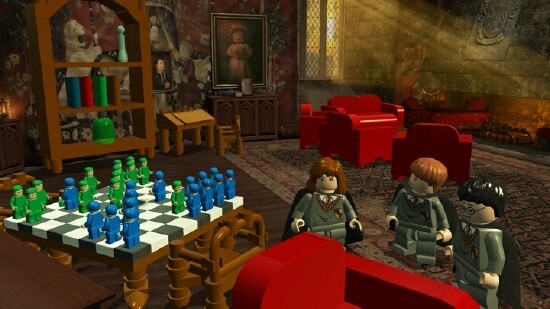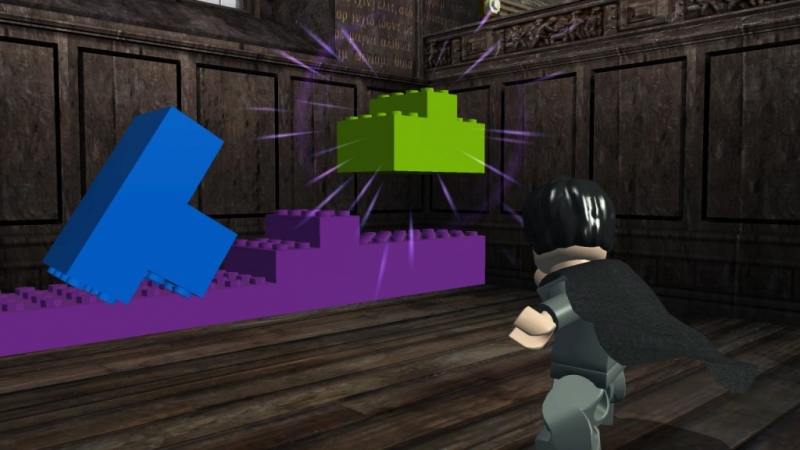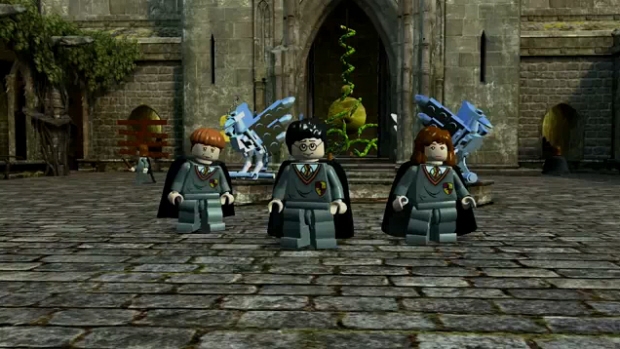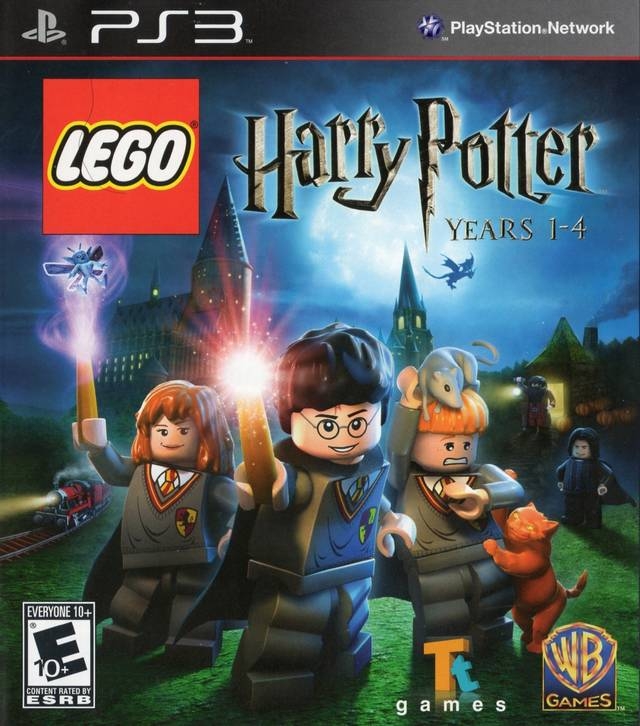
Lego Harry Potter: Years 1-4 - Review
by VGChartz Staff , posted on 24 July 2010 / 6,956 ViewsI am a huge fan of Harry Potter. In fact, Lego Harry Potter is a game I knew I would be playing before I was even half way through the first Lego Star Wars game five years ago. The wait has been longer than expected, but it is finally here with the same mishmash of blocky visuals and a canonical take on a beloved franchise that we have come to expect from this series, made as always by developers Traveler‘s Tale. After so many Lego games, the process has become formulaic, yet the magical world of Hogwarts is charming enough to still make this game enjoyable for its intended audience: Harry Potter fans, like myself.
As the title suggests, the story includes the events between Harry’s first and fourth years at Hogwarts School of Witchcraft and Wizardry, or Sorcerer’s (Philosopher’s) Stone through the Goblet of Fire for the uninitiated. The very first scene depicts baby Harry being left on the Dursley’s doorstep, then everything up to his first visit to Diagon Alley. All the story details are completely pantomimed, with no text or any explanation of what is going on, so much of the subtlety of J.K. Rowling’s multi-layered narrative is lost. Players not familiar with either the films or books might struggle to comprehend anything happening on the screen, but I suspect such gamers would be in the minority anyway. For fans, it can actually be quite amusing trying to interpret exactly what the cutscenes are attempting to convey, and you will either chuckle at it or bemoan some of the liberties taken to fit the story into this unusual format. There are a lot of funny scenes with Lego’s trademarked brand of physical comedy and some moments even conjured the same emotions felt when originally reading through the books.

Gameplay is a mixture of light platforming, puzzle solving involving magic and reconstructing Legos, with the occasional class to learn a new spell thrown in for good measure. There are two or more controllable characters on-screen at all times; a cue for a second player to drop in or out at their own leisure. When playing by yourself the computer AI accompanies you through the levels. Do not expect much from your AI companion, they never help tackle any enemies, lead you towards secrets, or help solve puzzles. Really, they are there only for when something requires two players to progress or when the other character's unique abilities are needed.
In terms of abilities, the most important is Leviosa, known by most wizard and witch characters. It essentially replicates the function of The Force from the Star Wars games. Anytime blocks need reassembling, Leviosa is the answer, and any object that can be interacted with using the spell will have a purple aura around it when you're in close proximity. Sometimes Leviosa requires you to manually manipulate the object, other times things just fall into place naturally.
Lego Harry Potter has one huge advantage over every other Harry Potter videogame made thus far. Rather than spreading out the events of a single year into one game, with tons of filler in between, this game only focuses on the major events of each year. Whether or not those major events translate into fun level design is hit or miss, though thankfully more tip towards the former rather than the latter. Levels are broken up by interludes within Hogwarts, where you can either go exploring on your own for any of the numerous collectibles hidden behind every nook and cranny, or go to class (it is a school after all) to learn something new before you proceed towards the next adventure. Finding ingredients to mix potions comprises a sizable portion of the gameplay. The in-game representation of Hogwarts is well thought out and decently sized, and you can always follow behind Nearly Headless Nick to find out where you should go next if you ever happen to lose your way.

Collateral damage is the name of the game, so at any point you can aim your wand, freely locking onto multiple targets, and then unleash a forceful spell that smashes things to pieces or opens chests. Generally that is a good tactic to use should you ever not know exactly what you're supposed to do in order to progress. Despite occasional hints from Dumbledore, not knowing what to do is the most difficult and frustrating part of an otherwise easy game. It's not that the puzzles are hard, just that they can be hard to identify, which is why blasting everything onscreen works so well in learning what you can and cannot interact with. As far as difficulty goes, it is the same as any other Lego game; simple to defeat enemies and bosses, with the only penalty for death being the loss of studs.
There are a ton of characters to unlock and playing through the story. Most of the time, though, you will be playing with the star trio of Harry, Ron, and Hermione. Harry has his trusty Invisibility Cloak to help him sneak past enemies and the always-on-the-lookout Finch. Ron (up until the end of year 3) can switch control to Scabbers in order to reach tight crawlspaces. Hermione can decipher any puzzle where a bookcase is present, prompting a very simple minigame, and use her cat Crookshanks to dig things up. Other characters that come in handy are the strong half-giant Hagrid, his uncharacteristically ferocious dog Fang, and even Moaning Myrtle.
There are many other ways characters differentiate (for example, Harry is one of the few who can adequately ride a broom, but never learns to deal with Boggarts) and this is best exemplified during the game’s free play modes. Here you can play as any character you have unlocked and use their abilities to access previously unreachable areas in the environments. The amount of things to collect borders on the ridiculous. For completionists this will extend the play time of the game considerably. In all there are six levels to a year, which totals 24 levels. Add in all the time spent running around Hogwarts and you get a decent length for a platformer, which is roughly in-line with other Lego games. That being said, you can clear all of the story segments in 7 hours or less.

Technically, the graphics in Lego Harry Potter are no better and no worse than any other Lego game we have seen this generation. But, as I alluded to earlier, the magic of this game’s setting really shines through. Using the films as a guideline, the constant magical movement in this world really makes it a wonder to behold, especially for fans. Not all of the Lego caricatures hit the mark (Wormtail’s especially), and the female form still comes across as awkward when shoehorned into a Lego mold. The most memorable musical scores from the films are all present and even accompany scenes in the right order, though as you run around Hogwarts you will be treated to a cyclical medley of sorts.
Lego Harry Potter: Years 1-4 accomplishes what it intended to do; provide hours of entertainment in a Lego-fied world that fans can explore and come back to. It is a fun and finely crafted adaptation of a beloved franchise that nearly anyone can enjoy. Is it the best Lego game yet? That's up for debate, but it's definitely up there thanks to a great visual aesthetic and exciting set pieces. A sequel is no doubt inevitable, and hopefully it will include all seven adventures and refine a few of the less pleasurable aspects of this title. If I were to score this game based on the standards of the O.W.L.S (Ordinary Wizarding Levels), it would receive an Acceptable (A).
VGChartz Verdict
7.5
Good



























